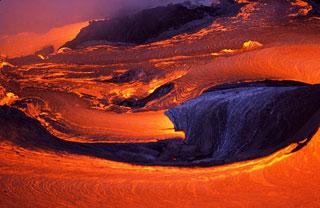
A file photo.
PASADENA, CALIFORNIA (BNS): A subsurface ocean of molten or partially molten magma exists beneath the surface of Jupiter's volcanic moon Io, NASA's Jet Propulsion Laboratory (JPL) said on Thursday.
The finding heralds the first direct confirmation of this kind of magma layer at Io and explains why the moon is the most volcanic object known in the solar system.
"Scientists are excited we finally understand where Io's magma is coming from and have an explanation for some of the mysterious signatures we saw in some of the Galileo's magnetic field data," Krishan Khurana, lead author of the study and former co-investigator on Galileo's magnetometer team at UCLA, was quoted as saying in a JPL news report.
The research was conducted by scientists at the University of California, Los Angeles; the University of California, Santa Cruz; and the University of Michigan, Ann Arbor. The study is published this week in the journal Science.
Io produces about 100 times more lava each year than all the volcanoes on Earth.
While Earth's volcanoes occur in localised hotspots like the "Ring of Fire" around the Pacific Ocean, Io's volcanoes are distributed all over its surface. A global magma ocean about 30 to 50 kilometers (20 to 30 miles) beneath Io's crust helps explain the moon's activity.
"It turns out Io was continually giving off a 'sounding signal' in Jupiter's rotating magnetic field that matched what would be expected from molten or partially molten rocks deep beneath the surface," added Krishan Khurana.
Khurana and his team reached their conclusion by reanalysing data from NASA's Galileo spacecraft, which flew by Io in 1999 and 2000.
The data collected by Galileo contained unusual signatures produced by the interaction between Jupiter's magnetic field and Io's magnetic field.
Tests showed that the signatures detected by Galileo were consistent with a rock such as lherzolite, an igneous rock rich in silicates of magnesium and iron found in Spitzbergen, Norway.
The magma ocean layer on Io appears to be more than 50 kilometers (30 miles thick), making up at least 10 percent of the moon's mantle by volume. The blistering temperature of the magma ocean probably exceeds 1,200 degrees Celsius (2,200 degrees Fahrenheit).
Galileo was launched in 1989 and began orbiting Jupiter in 1995. Unexplained signatures appeared in magnetic field data from Galileo flybys of Io in October 1999 and February 2000. After a successful mission, the spacecraft was intentionally sent into Jupiter's atmosphere in 2003.
 Previous Article
Previous Article Next Article
Next Article













The Indian Air Force, in its flight trials evaluation report submitted before the Defence Ministry l..
view articleAn insight into the Medium Multi-Role Combat Aircraft competition...
view articleSky enthusiasts can now spot the International Space Station (ISS) commanded by Indian-American astr..
view article